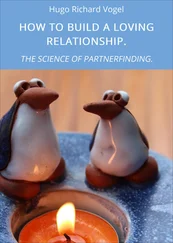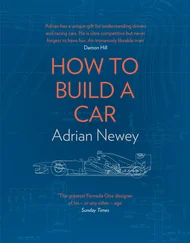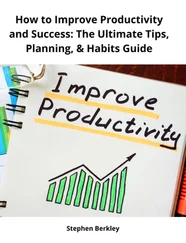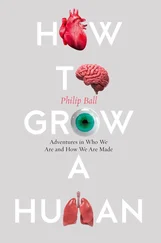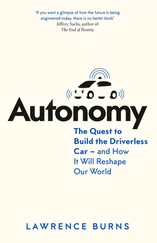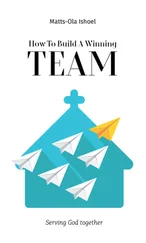Eyal, Nir - Hooked - How to Build Habit-Forming Products
Здесь есть возможность читать онлайн «Eyal, Nir - Hooked - How to Build Habit-Forming Products» весь текст электронной книги совершенно бесплатно (целиком полную версию без сокращений). В некоторых случаях можно слушать аудио, скачать через торрент в формате fb2 и присутствует краткое содержание. Год выпуска: 2014, Издательство: Nir Eyal, Жанр: Старинная литература, на английском языке. Описание произведения, (предисловие) а так же отзывы посетителей доступны на портале библиотеки ЛибКат.
- Название:Hooked: How to Build Habit-Forming Products
- Автор:
- Издательство:Nir Eyal
- Жанр:
- Год:2014
- ISBN:нет данных
- Рейтинг книги:5 / 5. Голосов: 1
-
Избранное:Добавить в избранное
- Отзывы:
-
Ваша оценка:
- 100
- 1
- 2
- 3
- 4
- 5
Hooked: How to Build Habit-Forming Products: краткое содержание, описание и аннотация
Предлагаем к чтению аннотацию, описание, краткое содержание или предисловие (зависит от того, что написал сам автор книги «Hooked: How to Build Habit-Forming Products»). Если вы не нашли необходимую информацию о книге — напишите в комментариях, мы постараемся отыскать её.
Hooked: How to Build Habit-Forming Products — читать онлайн бесплатно полную книгу (весь текст) целиком
Ниже представлен текст книги, разбитый по страницам. Система сохранения места последней прочитанной страницы, позволяет с удобством читать онлайн бесплатно книгу «Hooked: How to Build Habit-Forming Products», без необходимости каждый раз заново искать на чём Вы остановились. Поставьте закладку, и сможете в любой момент перейти на страницу, на которой закончили чтение.
Интервал:
Закладка:
But if the search to resolve uncertainty is such a powerful tool of engagement, why do we eventually lose interest in the things that once riveted us? Many people have experienced the intense focus of being hooked on a TV series, a great book, a new video game or even the latest gadget. Yet, most of us lose interest in a few days or week’s time. Why does the power of variable rewards seem to fade away?
Perhaps no company in recent memory epitomizes the mercurial nature of variable rewards quite like Zynga, makers of the hit Facebook game FarmVille. In 2009, FarmVille became an unmissable part of the global zeitgeist. The game smashed records as it quickly reached 83.8 million monthly active users by leveraging the Facebook platform to acquire new players. [xcvii]In 2010, as “farmers” tended their digital crops — while paying real money for virtual goods and levels — the company generated more than $36 million in revenue. [xcviii]
The company seemed invincible and set a course for growth by cloning its FarmVille success into a franchise. Zynga soon released CityVille, ChefVille, FrontierVille, and several more “-Ville” titles using familiar game mechanics in the hope that people would enjoy them as voraciously as they had FarmVille. By March 2012, Zynga’s stock was flying high and the company was valued at over $10 billion.
But by November of that same year, the stock was down over 80 percent. It turned out that Zynga’s new games were not really new at all. The company had simply re-skinned FarmVille, and soon players had lost interest and investors followed suit. What was once novel and intriguing became rote and boring. The “Villes” had lost their variability, and with it, their viability.
As the Zynga story demonstrates, an element of mystery is an important component of continued user interest. Online games like FarmVille suffer from what I call “finite variability” — an experience that becomes predictable after use. While Breaking Bad built suspense over time as the audience wondered how the series would end, eventually interest in the show would wane when it finally concluded. The series enthralled viewers with each new episode, but now that it is all over, how many people who saw it once will watch it again? With the plot lines known and the central mysteries revealed, the show just won’t seem as interesting the second time around. Perhaps the show might resurrect interest with a new episode in the future, but viewership for old episodes people have already seen will never peak as it did when they were new. Experiences with finite variability become less engaging because they eventually become predictable.
Businesses with finite variability are not inferior per se , they just operate under different constraints. They must constantly churn out new content and experiences to cater to their consumers’ insatiable desire for novelty. It is no coincidence that both Hollywood and the video gaming industry operate under what is called the “studio model,” whereby a deep-pocketed company provides backing and distribution to a portfolio of movies or games, uncertain which one will become the next mega-hit.
This is in contrast with companies making products exhibiting “infinite variability” — experiences that maintain user interest by sustaining variability with use. For example, games played to completion offer finite variability while those played with others people have higher degrees of infinite variability because the players themselves alter the game-play throughout. World of Warcraft, the world's most popular massively multiplayer online role-playing game, still captures the attention of more than 10 million active users eight years after its first release. [xcix]While FarmVille is played mostly in solitude, World of Warcraft is played with teams and it is the hard-to-predict behavior of other people that keeps the game interesting.
While content consumption, like watching a TV show, is an example of finite variability, content creation is infinitely variable. Sites like Dribbble, a platform for designers and artists to showcase their work, exemplify the longer-lasting engagement that comes from infinite variability. On the site, contributors share their designs in search of feedback from other artists. As new trends and design patterns change, so do Dribbble’s pages. The variety of what Dribbble users can create is limitless, and the constantly changing site always offers new surprises.
Platforms like YouTube, Facebook, Pinterest and Twitter all leverage user-generated content to provide visitors with a never-ending stream of newness. Of course, even sites utilizing infinite variability are not guaranteed to hold onto users forever. Eventually — to borrow from Michael Lewis’s title — the “new, new thing” comes along and consumers migrate to it for the reasons discussed in earlier chapters. However, products utilizing infinite variability stand a better chance of holding onto users’ attention, while those with finite variability must constantly reinvent themselves just to keep pace.
Which Rewards Should You Offer?
Fundamentally, variable reward systems must satisfy users’ needs, while leaving them wanting to re-engage. The most habit-forming products and services utilize one or more of the three variable rewards types of tribe, hunt and self. In fact, many habit-forming products offer multiple variable rewards.
Email, for example, utilizes all three variable reward types. What subconsciously compels us to check our email? First, there is uncertainty surrounding who might be sending us a message. We have a social obligation to respond to emails and a desire to be seen as agreeable (rewards of the tribe). We may also be curious about what information is in the email. Perhaps something related to our career or business awaits us? Checking email informs us of opportunities or threats to our material possessions and livelihood (rewards of the hunt). Lastly, email is in itself a task — challenging us to sort, categorize and act to eliminate unread messages. We are motivated by the uncertain nature of our fluctuating email count and feel compelled to gain control of our inbox (rewards of the self).
As B.F. Skinner discovered over 50 years ago, variable rewards are a powerful inducement to repeat actions. Understanding what moves users to return to habit-forming products gives designers an opportunity to build products that align with their interests.
However, simply giving users what they want is not enough to create a habit-forming product. The feedback loop of the first three steps of the hook — trigger, action and variable reward — still misses a final critical phase. In the next chapter, we will learn how getting people to invest their time, effort, or social equity in your product is a requirement for repeat use.
***
Remember and Share
- Variable Reward is the third phase of the Hook Model, and there are three types of variable rewards: tribe, hunt and self.
- Rewards of the tribe is the search for social rewards fueled by connectedness with other people.
- Rewards of the hunt is the search for material resources and information.
- Rewards of the self is the search for intrinsic rewards of mastery, competence, and completion.
- When our autonomy is threatened, we feel constrained by our lack of choices and often rebel against doing a new behavior. Psychologists call this “reactance.” Maintaining a sense of user autonomy is a requirement for repeat engagement.
- Experiences with finite variability become increasingly predictable with use and lose their appeal over time. Experiences that maintain user interest by sustaining variability with use exhibit infinite variability.
Читать дальшеИнтервал:
Закладка:
Похожие книги на «Hooked: How to Build Habit-Forming Products»
Представляем Вашему вниманию похожие книги на «Hooked: How to Build Habit-Forming Products» списком для выбора. Мы отобрали схожую по названию и смыслу литературу в надежде предоставить читателям больше вариантов отыскать новые, интересные, ещё непрочитанные произведения.
Обсуждение, отзывы о книге «Hooked: How to Build Habit-Forming Products» и просто собственные мнения читателей. Оставьте ваши комментарии, напишите, что Вы думаете о произведении, его смысле или главных героях. Укажите что конкретно понравилось, а что нет, и почему Вы так считаете.

